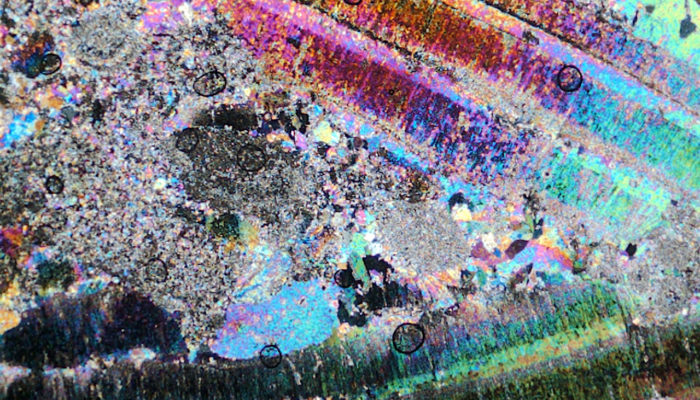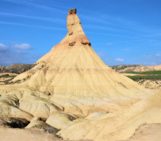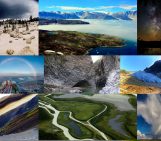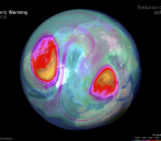
This is a transmitted light microscope image of a thin section – a 50-micron thick sliver of rock. This sample was collected from Jebel Hafit, a mountain which straddles the United Arab Emirates and Oman border. Jebel Hafit is approximately 900 m high and is made up of Eocene to Miocene age carbonate rocks which were mainly deposited in a shallow water, tropical setting.
More specifically, this image shows part of a larger benthic foraminifera (LBF). During the Eocene, in warm, shallow-water settings, larger benthic foraminifera were abundant and thrived alongside a diverse range of other coral reef organisms. These foraminifera are single-celled organisms, but despite this they form extremely complex shells (called tests) and, as their name suggests they are larger than other foraminifera, some even grew to more than 10 cm in diameter!
The “psychedelic” colours seen in this image are due to the properties of calcite when observed under crossed polarised light. There are a number of stages of calcite formation preserved in this sample – from the fibrous crystalline calcite of the foraminifera itself, to the infilling of fine-grained calcite in the centre of the fossil, to the coarse-grained calcite overgrowth seen on the top right of the image.
This sample was collected for a project aiming to investigate the impacts of extreme warmth on very shallow water, tropical habitats. Larger benthic foraminifera are ideal recorders of long-term environmental changes and as such are a valuable tool for researching warmth in the geological past.
Description by Charlotte Beasley, webpage.
Imaggeo is the EGU’s online open access geosciences image repository. All geoscientists (and others) can submit their photographs and videos to this repository and, since it is open access, these images can be used for free by scientists for their presentations or publications, by educators and the general public, and some images can even be used freely for commercial purposes. Photographers also retain full rights of use, as Imaggeo images are licensed and distributed by the EGU under a Creative Commons licence. Submit your photos at http://imaggeo.egu.eu/upload/.




